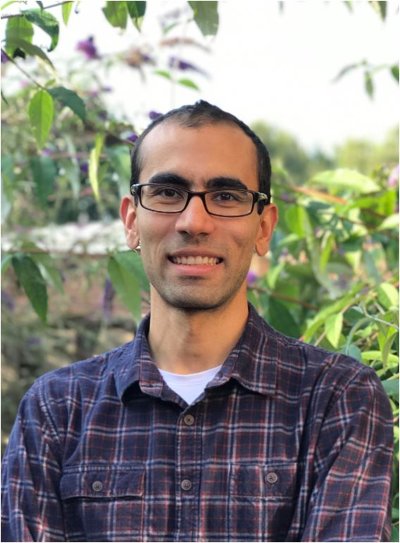Handheld laser speckle contrast perfusion imaging
Due to the COVID-19 crisis the PhD defence of Ata Chizari will take place (partly) online.
The PhD defence can be followed by a live stream.
Ata Chizari is a PhD student in the research group Biomedical Photonic Imaging (BPI). His supervisor is prof.dr.ir. W. Steenbergen from the Faculty of Science and Technology (S&T).
 Laser speckle contrast imaging (LSCI) is a noninvasive method for evaluation of microcirculatory blood flow. LSCI has a broad medical application such as reconstructive surgery, burns and dermatology. Commercially available LSCI systems are bulky and operate in mounted modality. The former limits their application in operation theatres and other clinical contexts with space limitation while the latter brings inconvenience for both patients and clinicians. Such limitations give rise to develop handheld and compact devices for LSCI. As opposed to all the benefits a handheld LSCI system offers, it can lead to unreliable measurement results due to the involuntarily movements applied during a measurement either by the patient or by the operator. My PhD research was mainly outlined around addressing the challenge of movement artefacts in handheld laser speckle contrast perfusion imaging which is summarized as follows:
Laser speckle contrast imaging (LSCI) is a noninvasive method for evaluation of microcirculatory blood flow. LSCI has a broad medical application such as reconstructive surgery, burns and dermatology. Commercially available LSCI systems are bulky and operate in mounted modality. The former limits their application in operation theatres and other clinical contexts with space limitation while the latter brings inconvenience for both patients and clinicians. Such limitations give rise to develop handheld and compact devices for LSCI. As opposed to all the benefits a handheld LSCI system offers, it can lead to unreliable measurement results due to the involuntarily movements applied during a measurement either by the patient or by the operator. My PhD research was mainly outlined around addressing the challenge of movement artefacts in handheld laser speckle contrast perfusion imaging which is summarized as follows:
- The movements of a handheld LSCI system was quantified employing electromagnetic (EM) tracking and the applied translational, tilt and on-surface laser beam speeds were measured. By observing speckle contrast on static objects, the magnitudes of translation and tilt of wavefronts were explored for various scattering levels of the objects. We concluded that for tissue mimicking static phantoms, on-surface speeds play a dominant role to wavefront tilt speed in creation of movement artefacts.
- The influence of the laser beam type in handheld-LSCI was studied by evaluating the speckle contrast on static objects for beams with planar, spherical or scrambled wavefronts, and for movement artefacts caused by tilting or translation of wavefronts. We showed that the scrambled waves made by often-used engineered diffusers lead to significantly larger movement artefacts than planar or spherical waves.
- An analytical-numerical model based on the optical Doppler effect was proposed for prediction of movement artefacts caused by translation in a handheld LSCI when static scattering objects are considered. The model incorporates the type of illumination as well as the imaging geometry by taking into account the spread of wavevectors for illumination and detection.
- Further, we examined the performance of our in-house handheld perfusion imager (HAPI) in a clinical setting when measuring on psoriasis lesions. A pipeline was introduced to process, analyze and compare data of 11 measurement pairs (mounted-handheld LSCI modes) operated on 5 patients and various skin locations. The results showed that after proper post-processing, the handheld measurements are in agreement with the corresponding mounted measurements on a visual basis.
- Last but not least, we broadened our focus to the scientific field of tissue engineering and biofabrication. We used LSCI, side-stream dark field (SDF) microscopy and white light imaging to investigate the structural and blood flow information of developing vascular networks within an ex ovo chicken embryo chorioallantoic membrane (CAM) model. First, white-light imaging was used to map the complete vascular network. Second, the spatial and temporal fluctuations of blood flow in the corresponding vessels were non-invasively captured by LSCI. Third, the organization of capillaries, as well as fluid flow velocities, were determined based on SDF microscopy, which enabled the visualization of individual erythrocytes flowing through capillary networks. The application of LSCI and SDF on perfusable tissues enables tissue engineers to study the flow perfusion in a non-invasive fashion.




